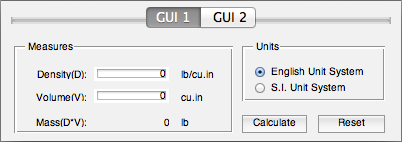
- PUBLISH TAB IN MATLAB 2012 UPDATE
- PUBLISH TAB IN MATLAB 2012 SOFTWARE
- PUBLISH TAB IN MATLAB 2012 CODE
m files, which are compatible with any version of MATLAB and can also be viewed (but not exectuted) in a text editor. In the folder legacyformat we also provide versions of these scripts that have been converted to. mlx files are compatible with MATLAB version R2016a or later
PUBLISH TAB IN MATLAB 2012 CODE
These are a code notebook format which contains descriptive text alongside the code. The majority of provided code files are MATLAB live code files. We provide the script calibrationStep3_3_processoptimizationresults.mlx which reads in massoptimizationresults.csv and post-processes the results in order to produce posterior estimates for the parameters m, alpha, and beta. We provide the output obtained from running this script on our UAV structural model in datafiles/step2/massoptimizationresults.csv. Modify_point_masses_in_structural_FEA_model(point_mass_dict)įrequencies = run_structural_FEA_model_and_return_natural_frequencies() Modify_material_properties_in_structural_FEA_model(Emultiplier) The provided Python code includes references to three (self-explanatory) functions that will need to be filled in for your choice of structural model: As a result the provided Python code will not run in the provided state.
PUBLISH TAB IN MATLAB 2012 SOFTWARE
Since the Akselos Integra software is proprietary and was used under license, we are unable to provide its source code.

The structural analysis model used to generate the paper's results is Akselos Integra v4.5.9. We provide Python code ( calibrationStep3_2_optimize_point_masses.py) which was used to run this optimization on our UAV structural model. This step requires evaluating the computational digital twin model in an optimization loop in order to fit point-masses to the structure which match the natural frequencies and damping ratios computed in Step 3_1.

time data ( datafiles/step3/initialconditiondata_X.DAT) for the initial condition experiments and code ( calibrationStep3_1_processdata.mlx) to post-process this data and extract modal natural frequencies and damping ratios for the first two bending modes.

This step is broken into 3 parts: Step 3_1: Data processing This recreates Figure 5, and Table 1, column 4.
PUBLISH TAB IN MATLAB 2012 UPDATE
We provide measured load-displacement data ( datafiles/step2/load_displacement_measurements.csv), prior model predictions of load-displacement data ( datafiles/step2/load_displacement_model.csv) and code ( calibrationStep2.mlx) to perform an update on the young's modulus scaling parameter, e. We provide geometry data ( datafiles/step1/geometry_data.csv) and code ( calibrationStep1.mlx) to perform the update on geometric parameter estimates. In particular, the provided scripts will reproduce all graphs in Figure 5 and Table 1. This folder contains code and data to reproduce the results in the associated paper. Keywords: UAV, digital twin, graphical model, Dynamic Bayesian Network, experimental calibration Probabilistic Graphical Model Foundation for Enabling Predictive Digital Twins at Scale},Īuthor=,


 0 kommentar(er)
0 kommentar(er)
